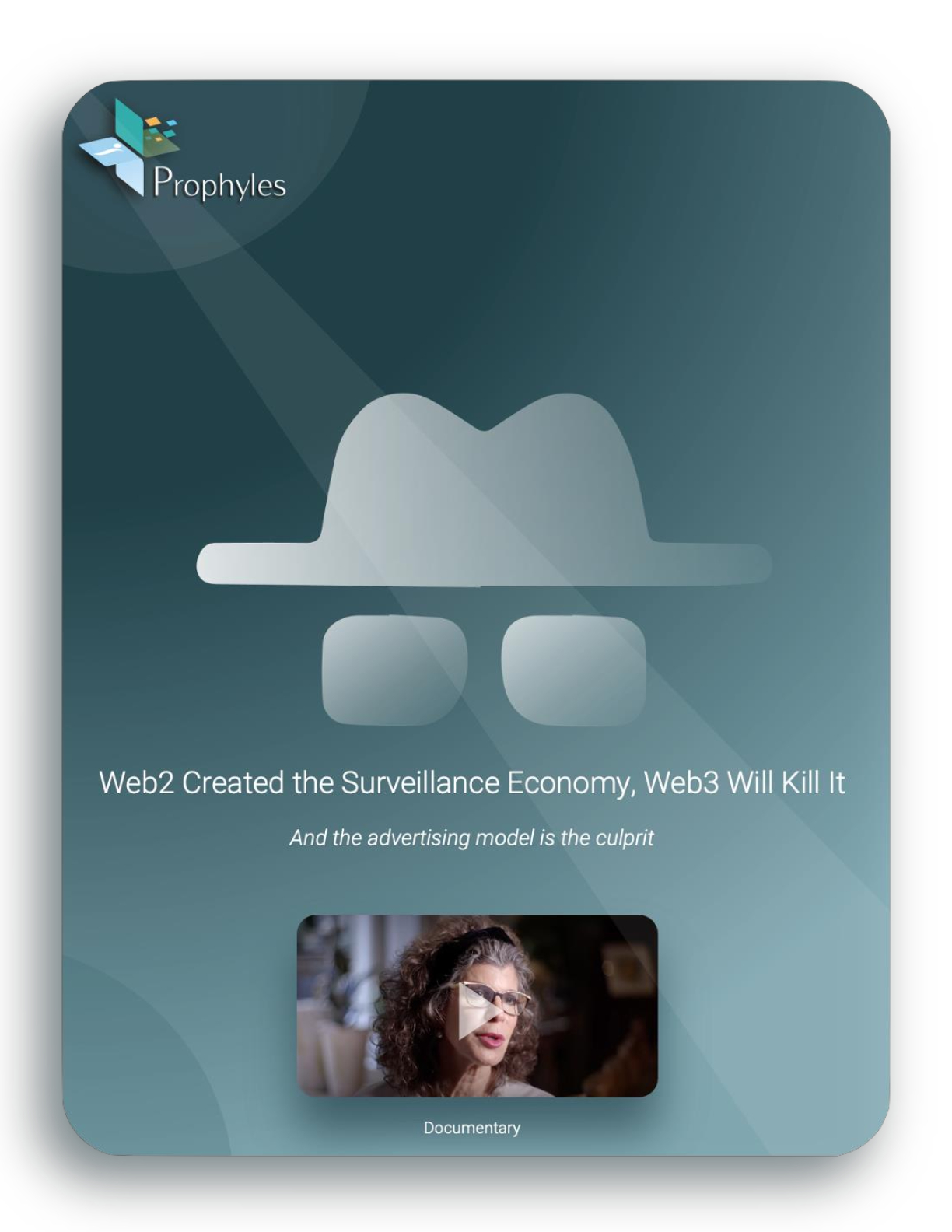
 Web2 Created the Surveillance Economy, Web3 Will Kill ItAnd the advertising model is the culprit
Web2 Created the Surveillance Economy, Web3 Will Kill ItAnd the advertising model is the culprit
After the financial-agriculture revolution from 1600 to 1740 and the industrial revolution from 1780 to 1840, followed by the technical revolution or the second industrial revolution from 1870 to 1920, the surveillance revolution came upon us in the last decade unwillingly and unexpectedly.
Documentary
The Age of Surveillance Capitalism
Shoshana Zuboff – Harvard Professor
 Web2 Created the Surveillance Economy, Web3 Will Kill ItAnd the advertising model is the culprit
Web2 Created the Surveillance Economy, Web3 Will Kill ItAnd the advertising model is the culprit
Surveillance occurs in four ways:
- Privacy settings in your browser. While Apple sets the default parameters to not allow any tracking or tracing, other browsers, such as Google Chrome, do the opposite because their business model relies heavily on advertisements from which they generate billions.
- Privacy settings in mobile apps. Apple recently implemented a new feature in iOS14 called App Tracking Transparency which makes it much harder for app developers and advertisers to track user behavior costing Facebook more than $10 billion in advertising revenues.
- Cookies dropped by websites that you visit. This has become a cat-and-mouse game between website owners and providers of browsers and ad blockers plug-ins. While websites must adhere to new regulations regarding cookies, they make it increasingly hard to turn them off.
- Social Logins from Facebook, Google, Twitter, LinkedIn, and others. As convenient as they are, using any social login allows its developer to track and trace you everywhere you go indefinitely. Essentially, we got tricked in believing slogans such as “do no evil” while in fact they turned out to be nothing but evil. With logins, you are damned if you do and damned if you don’t - if you use any social login you will be tracked, and if you use any manual login then you are increasing the probability for your Personal Information to fall in the hands of hackers.

 Web2 Created the Surveillance Economy, Web3 Will Kill ItAnd the advertising model is the culprit
Web2 Created the Surveillance Economy, Web3 Will Kill ItAnd the advertising model is the culprit
The advertising model, which originated with broadcasting and publishing, has been very useful to the great majority of people because it gave the public a free access to information. But then came social media which started to push the model to its limits (Peter Principle) with bots and fake clicks, fake views, fake reviews, fake reactions, fake comments, fake subscriptions, fake videos, fake influencers, fake friends, fake social networks, fake algorithms that promote misinformation and disinformation. Fame! Fame! Fame! Fame at any and all costs!!! Addictive as it is, fame became the most valuable commodity and the bloodstream of the advertising model.
Web2 and Its Social Media Pollution and Fakeness
 Web2 Created the Surveillance Economy, Web3 Will Kill ItAnd the advertising model is the culprit
Web2 Created the Surveillance Economy, Web3 Will Kill ItAnd the advertising model is the culprit
Web3, which is often refers to as the “semantic” web, cannot completely cleanse and then prevent all this Web2 pollution, but it can reduce it by putting more emphasis on “value” versus “information” by encouraging meaningful relationships, real connections, strong authentications, fair compensations, equitable monetization, and necessary democratization with an overall leveling of the playing field for a wider and deeper participation by the haves and have-nots. That is the reason why Web3 ought to be treated not just as a technological evolution, but rather as a “movement” that impacts our personal, professional, social, financial, and political lives by promoting and encouraging the following:
- Technologies:

- Decentralization of applications and systems.
- Open source systems.
- Blockchain.
- Smart Contracts.
- Cryptography.
- Integrated APIs.
- Privacy:

- Safe browsers with personalization and embedded privacy protection.
- Logins without tracking and with safe authentication saved in a private blockchain.
- Content:

- Regulating the collection and usage of Residual Data and Derivative Data.
- Usage of wisdom of crowds with transparent algorithms to moderate content.
- Revision of Section 230 to hold tech firms accountable for certain content.
- Protecting Personal Information with laws similar to IP protections.
- Outlaw surveillance with deterring penalties.
- Monetization:

- Fungible Tokens (FTs) and Non-Fungible Tokens (NFTs).
- Elimination of intermediaries with high fees for transactions and transfers.
